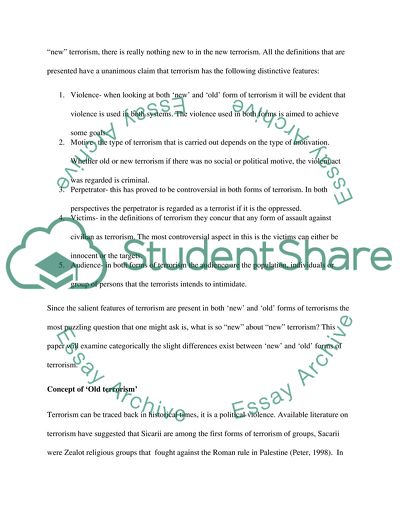Cite this document
(What Is so New about New Terrorism Coursework Example | Topics and Well Written Essays - 2250 words, n.d.)
What Is so New about New Terrorism Coursework Example | Topics and Well Written Essays - 2250 words. https://studentshare.org/social-science/1874580-what-is-so-new-about-new-terrorism
What Is so New about New Terrorism Coursework Example | Topics and Well Written Essays - 2250 words. https://studentshare.org/social-science/1874580-what-is-so-new-about-new-terrorism
(What Is so New about New Terrorism Coursework Example | Topics and Well Written Essays - 2250 Words)
What Is so New about New Terrorism Coursework Example | Topics and Well Written Essays - 2250 Words. https://studentshare.org/social-science/1874580-what-is-so-new-about-new-terrorism.
What Is so New about New Terrorism Coursework Example | Topics and Well Written Essays - 2250 Words. https://studentshare.org/social-science/1874580-what-is-so-new-about-new-terrorism.
“What Is so New about New Terrorism Coursework Example | Topics and Well Written Essays - 2250 Words”. https://studentshare.org/social-science/1874580-what-is-so-new-about-new-terrorism.


